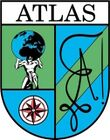Physical Geography Field Trip Abroad
Uiterlijk
The field trip has a three-yearly rotation, so different field trips take place to different regions with different professors.
2025: prof. Kervyn, Massif Central/Chaine des Puys/Ardeche
2024: prof. Vanmaercke, Moldavian Plateau / Eastern Romania
2023: prof. Verstraeten, Spain
The exam is oral; you get some preparation time for random questions. It is open book, so you get to take the excursion guide and the compiled notes.
2025: France
You always got two questions from this set: (sorry, some are dutch, but i dont have the time or energy to translate them myself; google is your friend) There might be some doubles in here depending on who wrote it down and how well they remembered:
- What are factors causing badlands formation? How would you stop badlands from eroding further?
- Morphology of the Ardèche's course: what processes/lithologies influence it? What types of valley forms do you encounter in different regions?
- Why is the Ardèche so susceptible to flash floods when compared to, for example, the Allier? How would you reconstruct historical floods on centennial and millennial timescales?
- What type of material can you find under the volcanic rocks in the different formations we saw?
- Name three different knickpoints we saw or whose influence we saw (doesnt need to exist anymore), discuss their formation and how you would estimate their retreat rate.
- What were the three monogenetic morphology types we saw and compre them in terms of composition, eruption type, and hazard
- You are a hazard risk manager on the ardeche what types of hazards are there and how would you assess the risk and how would you minimize it
- 3 ways of lake forming a lake and where you can find them
- different types of erutions explain everything you know
- Explain the meandering flow of the Ardèche, and the presence of its deep gorges around the Saint-Remeze plateau. Link this with the formation of caves.
- Some deposits observed in the field were interpreted to result from phreato-magmatic eruptions. Describe what are the main characteristics of the deposit and the volcano morphology that can lead to that interpretation. Highlight how deposits from a phreato-magmatic eruption can vary within a single volcano and relate it to the evolution of the eruption dynamics.
- Zet de volgende evenementen in chronologische volgorde. Geef voor elk aan wat de ruimtelijke omvang ervan is en hoe men deze kan dateren.
- The Chaîne des Puys and the Limagne fault became a UNESCO World heritage site in 2018, and the Chauvet cave in 2014. Explain what this means and what are the arguments that were put forward in these applications. Explain what challenges these sites are facing for their preservation and their touristic valorization.
- Waarom zijn de gorges in het Saint-Remeze plateau zo diep, hoe zijn ze gevormd en wanneer? Bespreek de verschillende fases.
- 2 stops bespreken die bewijs vormen voor uplift plioceen-pleistoceen en hoe we de rate van uplift daar konden bepalen
- bespreek op verschillende ruimtelijke schalen de typische vorm van het kalksteenplateau in saint remèze
- Alle knickpoints die we hebben gezien (beke een curveball) - noem er 4
- De vulkanen in de Chaîne des Puys komen voort uit dezelfde magmaserie. Verklaar hoe deze serie is geëvolueerd om te zorgen voor de grote variëteit aan vulkanen in het gebied. Geef ook aan hoe deze evolutie mogelijk is. Leg vervolgens uit hoe het mogelijk is dat de verschillende types vulkanen net langs elkaar kunnen gevormd worden. Leg ook het verband uit tussen de invloed van de magmatische serie op het type uitbarsting.
- ... there's more but you get the idea right
